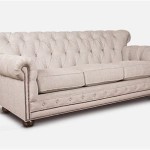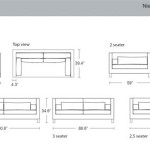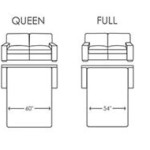How To Cover a Sectional Sofa
A sectional sofa, with its versatile configuration and ample seating, often serves as the centerpiece of a living room. Over time, however, the original upholstery may show signs of wear and tear or simply no longer suit the evolving decor. Replacing a sectional can be a significant investment, whereas covering it offers a cost-effective way to refresh its appearance and extend its lifespan. This article provides a comprehensive guide on how to effectively cover a sectional sofa.
Measuring and Planning
Accurate measurements are crucial for a well-fitting cover. Begin by dividing the sectional into its individual components, such as the chaise, corner piece, and armless sections. Measure the width, depth, and height of each component individually. Be sure to account for any curves or unique features. Record these measurements meticulously, creating a detailed diagram if necessary. This detailed approach helps ensure that the chosen cover will accommodate the sectional's specific dimensions and shape accurately.
Selecting the right fabric is another critical step. Consider factors like durability, cleanability, and aesthetics. Pet owners might opt for pet-friendly fabrics resistant to scratches and stains. Homes with young children may benefit from stain-resistant and easily washable materials. Consider the overall room décor and choose a color and pattern that complements the existing design.
Finally, determine whether to purchase a pre-made slipcover or create a custom-made cover. Pre-made slipcovers are readily available and offer a convenient option for standard sectional sizes. However, for sectionals with unusual shapes or dimensions, a custom-made cover provides a more tailored fit and allows for greater fabric selection. Creating a custom cover requires more advanced sewing skills and additional time.
Choosing the Right Cover
Once measurements are taken and fabric selected, focus shifts to selecting the appropriate cover type. Several types are available, each with its advantages and disadvantages. One common option is a traditional slipcover. These covers are designed to easily slip over the existing upholstery, offering a quick and easy way to update the sectional's appearance. They come in various fabrics and styles, making them a versatile choice.
Fitted slipcovers provide a more tailored look. These covers are designed to hug the contours of the sectional more closely, minimizing wrinkles and providing a sleeker aesthetic. They typically require more effort to install but offer a more polished finish. Stretch slipcovers, made from elastic materials, are a popular choice for their ease of installation and snug fit. They conform to the shape of the sectional, offering a streamlined appearance.
For a more permanent solution, reupholstering the sectional is another option. While this is a more involved and potentially costly process, it offers the advantage of completely transforming the sectional’s appearance and extending its lifespan significantly. Reupholstering involves removing the existing fabric and replacing it with new material, allowing for complete customization of the fabric, pattern, and even the cushioning.
Installing the Cover
Proper installation is essential for a smooth and wrinkle-free finish. Begin by identifying the front and back of the cover and positioning it correctly on the sectional. Ensure that the seams and patterns align with the sectional's shape. If using a slipcover, carefully tuck the fabric into the crevices between the cushions and frame. Use slipcover tucking tools to achieve a neat and secure fit.
For fitted or stretch slipcovers, ensure the cover is evenly distributed across the sectional, paying close attention to corners and curves. Smooth out any wrinkles or creases as you work. Some slipcovers may include ties or straps to help secure the cover in place and prevent it from shifting during use. These ties or straps should be fastened securely to maintain a taut and polished appearance.
Once the cover is in place, assess the overall fit and make any necessary adjustments. Smooth out any remaining wrinkles and ensure that the cover is securely tucked in. Regular maintenance, such as vacuuming and spot cleaning, will help to keep the cover looking its best and prolong its lifespan. Following the manufacturer's care instructions is essential for maintaining the cover's appearance and durability.

How To Make A Sectional Slipcover Confessions Of Serial Do It Yourselfer

10 Best Sectional Couch Covers To Protect Your Sofa

How To Make A Sectional Slipcover Confessions Of Serial Do It Yourselfer
:max_bytes(150000):strip_icc()/6ConfessionsofaserialDIYEr-579b60bcf09649a08b718ebbf5c02223.jpg?strip=all)
20 Diy Couch Cover Ideas For Any Budget

10 Best Sectional Couch Covers To Protect Your Sofa

How To Make A Sectional Slipcover Confessions Of Serial Do It Yourselfer

No Sew Drop Cloth Slipcover Town Country Living

10 Best Sectional Couch Covers To Protect Your Sofa

Anti Slip Sectional Couch Cover Thicken Sofa Slipcover Sweaterpicks
:max_bytes(150000):strip_icc()/1DIYDanielle-078d2abe22c144dd8957e1464a8f10fa.jpg?strip=all)
20 Diy Couch Cover Ideas For Any Budget








